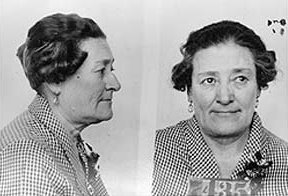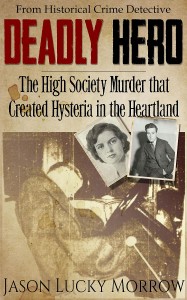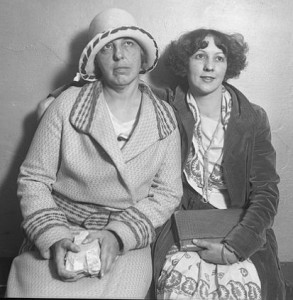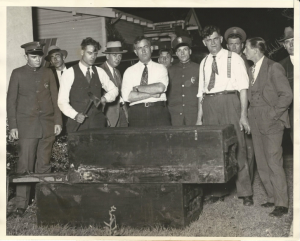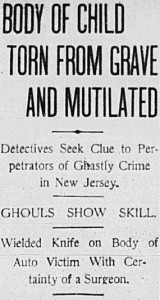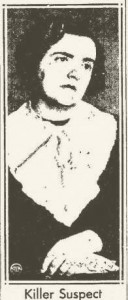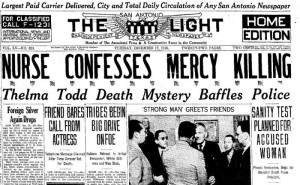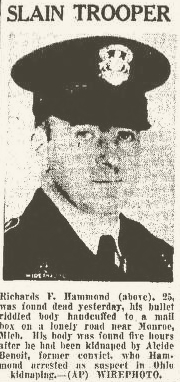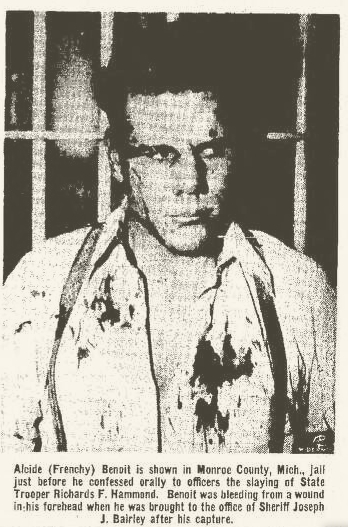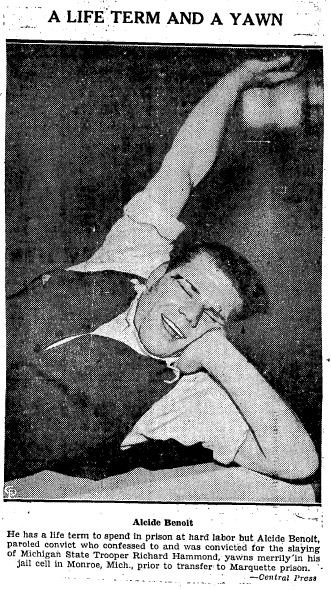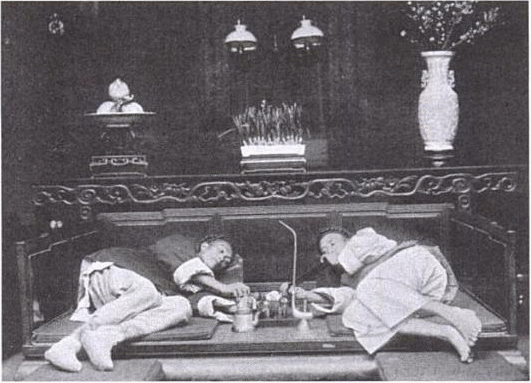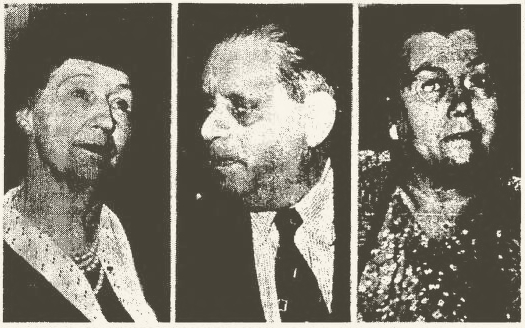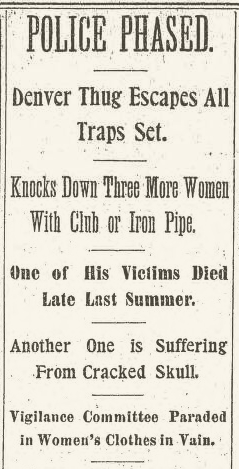Kardashian Murdered in 1916
Home | Rediscovered Crime News | Kardashian Murdered in 1916In 1916, Newton, Massachusetts tailor Manoog Kardashian was attacked by one of his employees who stabbed him with cutting shears and bit a chunk out of his right cheek over what may be one of the dumbest reasons to assault someone. Kardashian died nine days later, but not necessarily from his wounds. I came across this story while searching another case and thought it noteworthy not just because of the last name, but for all the circumstances that surround it. Beware that newspaper reporters of the day couldn’t seem to agree on the first names of both the victim and attacker, and that the attacker’s last name changed twice.
Kardashian Stabbed, It Is Alleged, by Parmerrian, an Employee in His Newton Tailor Shop.
[Newton, Massachusetts, Dec. 16, 1916] M. Kardashian, proprietor of a tailor shop at 1157 Walnut St. was taken to the Newton Hospital tonight with a deep gash in the intestines, several wounds in the leg and cuts on the hands inflicted, it is alleged, by an employee, M. Parmerrian, aged 24, with large cutting shears. His name is on the dangerous list.
According to other employees, the men quarreled and Parmerrian rushed at his employer and slashed him with the cutting shears. Kardashian, covered with blood, ran shouting from the shop.
Sergeant Clay and patrolman Fuller helped him to the office of Dr. C.A. Thompson who pronounced his condition critical and he was hurried to the hospital.
Parmerrian was arrested by patrolman Fuller for assault with a dangerous weapon. Kardashian is married and has a family.
Source: Boston Globe, Dec. 17, 1916, page 156.
Murder is Charged
Manoog Tarmerian Held at Newton, Charged with Death of Manoog Kardashian
[Newton, Massachusetts, Dec. 27, 1916] Manoog Tarmerian, [name change] 24, was arraigned before Judge W.F. Bacon this morning in the local Police Court on the charge of murder in having caused the death of his employer, Manoog Kardashian, by assaulting him with a pair of tailoring shears on the afternoon of Dec. 16 in his tailor shop at 1157 Walnut St, Newton Highlands. Probable cause was found and he was held without bail for the January term of the grand jury.
At the hearing evidence was brought out that Kardashian died Monday [Dec. 25] from pneumonia, and not from the direct result of the several wounds inflicted by Tarmerian. Medical Examiner George L. West testified that his death was due to pneumonia, as also did Dr. Loury of the Newton Hospital staff. This, both men stated, may have been brought on by giving the man ether, which has been known to happen in medical annals.
Patrolman William E. Fuller testified to the statement made by Tarmerian to the police officials. According to the officer’s testimony, Tarmerian stated that Kardashian made some comment over the way a pair of trousers were pressed, then grabbed him about the throat and bit him on the right cheekbones. All the witnesses bore out the fact that the man had a mark on the cheek after the fracas. Others testified to the fact that Tarmerian smelt of liquor when arrested.
Source: Boston Evening Globe, Dec. 27, 1916, page 5.
Tamerian On Trial in Manslaughter Case
[East Cambridge, MA, January 16, 1917] M. Tamerian of Newton Highlands was placed on trial on the charge of manslaughter in the Middlesex Superior Criminal Court at East Cambridge yesterday. He is charged with having caused the death of employer, Mancoz Kardashian [In the previous story, his first name was Manoog] a tailor of the same city. The case is being heard before Judge Stevens and a jury and will take several days.
It is alleged that Tamerian, who is little more than 21 years of age, attacked Kardashian with a pair of scissors in a dispute over the proper way to press trousers. Kardashian died at the Newton Hospital nine days later from a wound in his abdomen. [It was pneumonia in the previous article.] Two witnesses were called yesterday, one the widow of Kardashian, and the other William J. Cozens, a real estate dealer, who occupied a store adjoining the tailor shop where the alleged assault occurred.
Source: Boston Daily Globe, Jan. 17, 1917, page 3.
Disagree On Tamerian
Newton Man Tried on Manslaughter Charge Growing Out of Kardashian’s Death
[East Cambridge, MA, January 23, 1917] The jury in the trial of Martin Tamerian [I thought his name was Manoog?] of Newton on the charge of manslaughter in connection with the death of Mancooz Kardashian [Manoog & Mancoz in previous stories], a Newton tailor by whom he was employed, disagreed yesterday in the Superior Court at East Cambridge. The case occupied three days of last week and went to the jury on Friday.
Tamerian, it is alleged, attacked Kardashian with a pair of scissors, wounding him in the thigh. The latter, the state contended, contracted inhalation pneumonia during the administration of ether for an operation made necessary by the wound. The alleged attack occurred in Kardashian’s tailor shop in Newton Highlands on Dec. 16, following a quarrel.
Source: Boston Daily Globe, Jan. 23, 1917, page 9.
Unfortunately, there were no more newspaper articles about the Kardashian case after Tamerian’s trial ended in hung jury. Although I’m not positive, I suspect Tamerian (or Tarmerian or Parmerrian) accepted a plea deal which negated the need for a second trial and follow-up newspaper coverage.
—–###—–
Posted: Jason Lucky Morrow - Writer/Founder/Editor, September 3rd, 2013 under Rediscovered Crime News.
Tags: 1900-1919, Massachusetts, Murder, Workplace Violence
Comments: none


